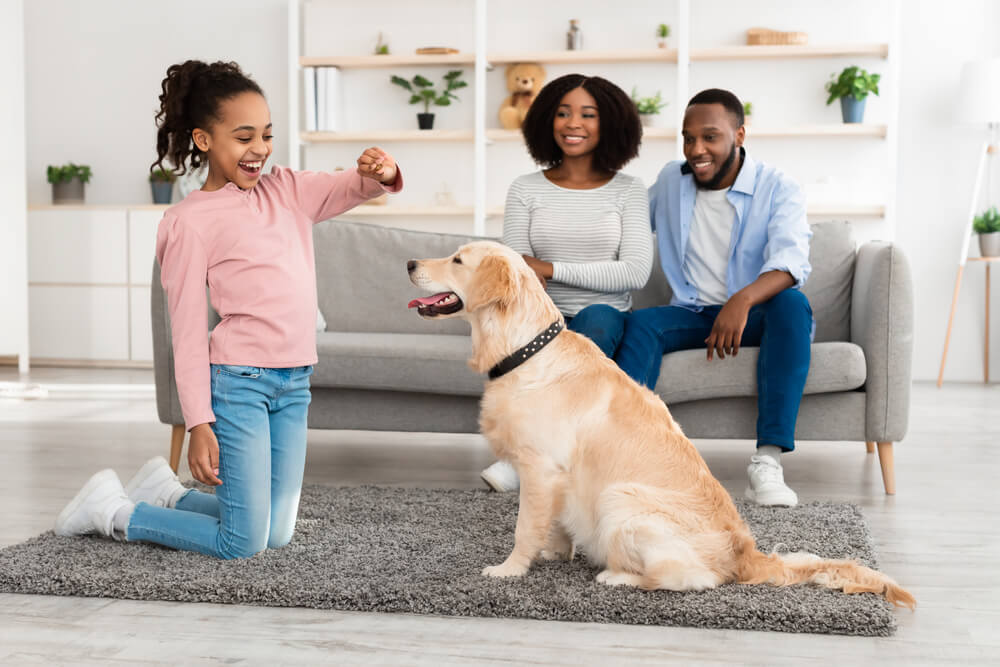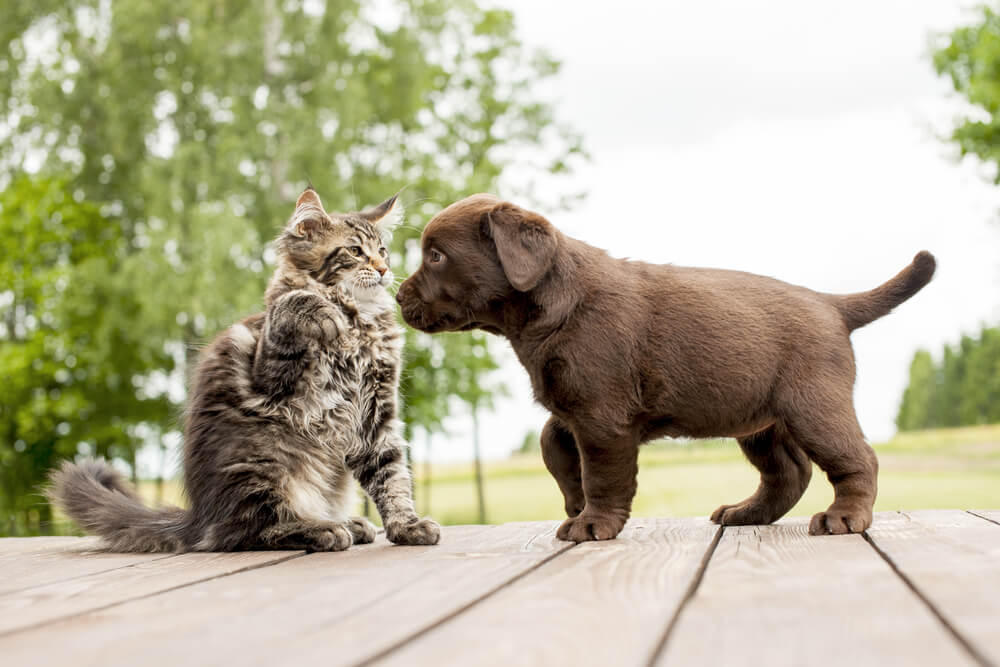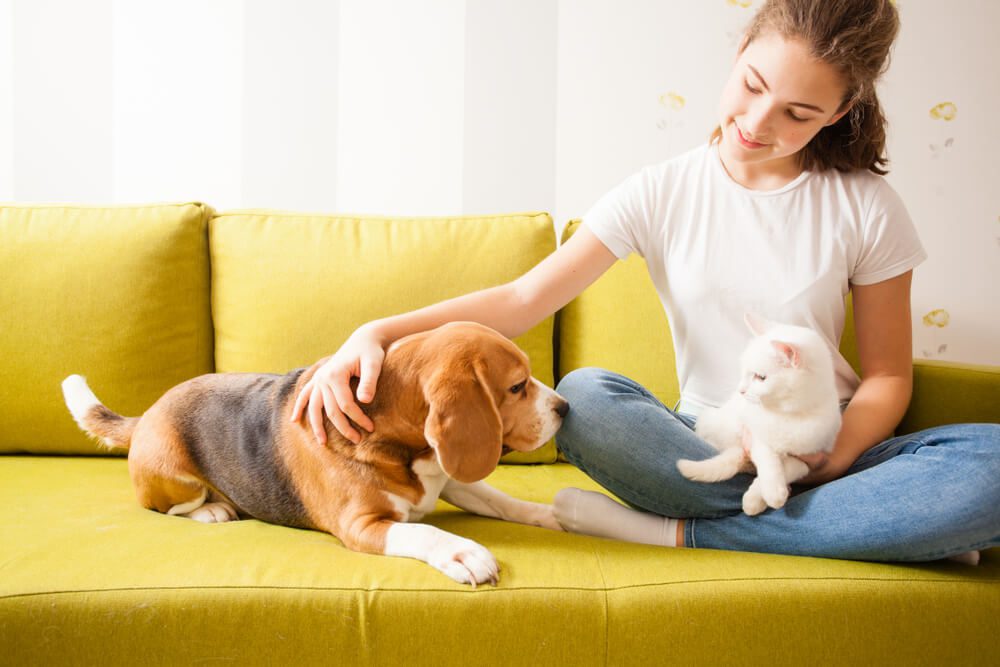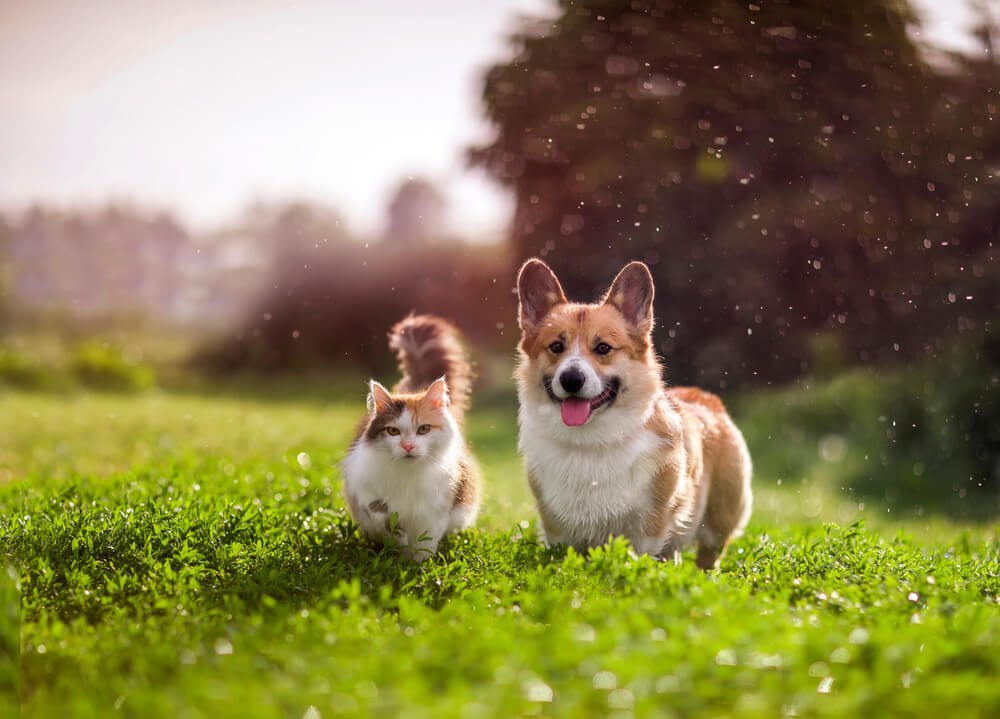How to Introduce a Cat to a Dog
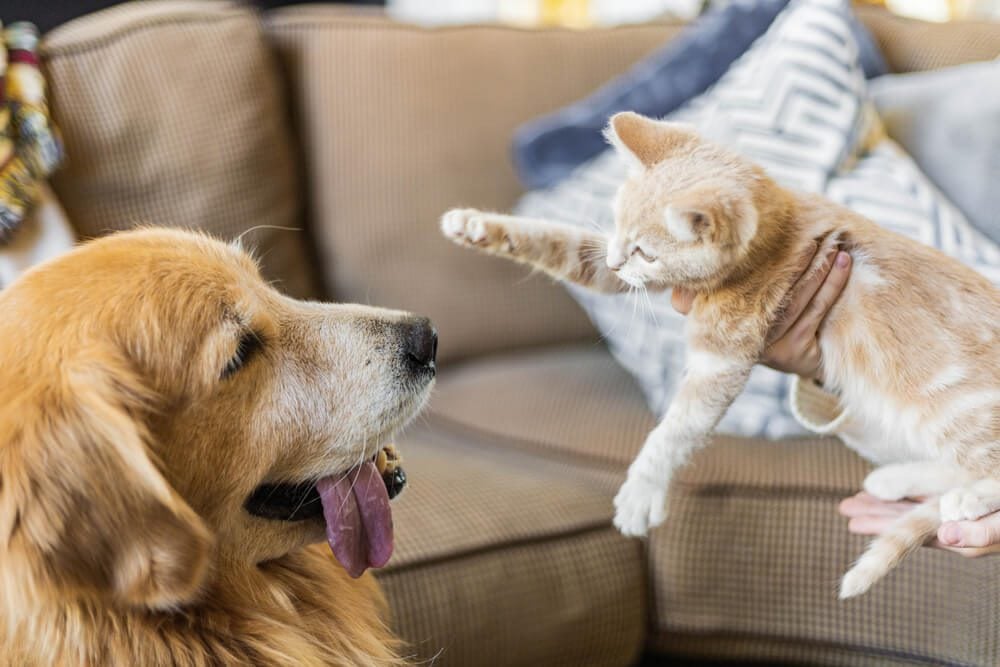
Table of Contents
How to Introduce a Cat to a Dog
How to Prepare for a Dog and Cat Introduction
Bringing a new pet home for the first time is exciting. But for the best outcome, your resident cat or dog may need careful preparation to feel comfortable and friendly towards their new housemate.
Of course, different breeds, temperaments, and socialization history will determine how easy their first introduction goes. Pets, cats in particular, are very territorial and take time to adjust to a new dog. A slow introduction process will increase the likelihood of your animals becoming best friends.
Considerations Before Introducing Cats and Dogs
Below are some must-knows before preparing for your pets’ first meeting.
Age
Are you introducing a new kitten to an older dog? Or a new puppy to an adult cat that is not used to other pets? The age of your animals will make an impact on that first encounter.
History
Has the cat lived with dogs or other pets before? If you’re adopting a new pet, ask the shelter whether the animal has encountered other animals and their reaction.
Typical Temperament
Understanding your animal’s temperate can set the scene for how easy the transition will be. Some cats can be aloof and carefree about a new dog in their space. But a shy cat that scares easily and is anxious may never befriend a canine rival.
Prey Drive
Some dog breeds have very high prey drives. If you’re adopting a dog to bring home to your resident cat, opt for breeds with calm behavior that do not have the urge to hunt. If you are bringing a cat home to your hunting dog, be careful to introduce them slowly and supervise interactions so that no harm befalls your cat.
Dogs with high prey drives are usually breeds that are hunters, sporting, or herding breeds. This includes breeds like border collies, terrier breeds, hounds such as bassets and greyhounds, and retrievers and setters. However, almost all dogs have an innate desire to hunt, chase, and capture. This drive causes them to chase cats.
Practice Obedience Training With Your Dog
Dog behavior can make a significant impact on the first introduction. As a pet parent, you want your cat to feel respected and safe. An obedient dog that has been socialized will react a lot better to a new situation and obey instructions like “sit,” “stay,” or “come.”
Positive reinforcement can provide your dog with an excellent association with its new friend. Dog treats are helpful in this time, giving dogs increased motivation for good and decent behavior. Even if your new puppy is enthusiastically lunging at their cat companion, reward them when they’re calm around the cat.
New puppies can enroll in training classes to learn the commands that will help them be obedient and social.
Items That You May Need
Additional pet resources can aid in a smooth transition. Each pet needs to feel that they have a safe space and items that are their own.
Here is a list of things you may need:
- A baby gate, or preferred barrier
- Kennel
- Litter tray
- Dog and cat treats
- A cat tree or scratching post
- Scented items from each pet
- Toys for distractions and rewarding behavior
Understanding Body Language in Cats and Dogs
Avoiding a crisis is possible when you understand the body language of cats and dogs. Dogs can be aroused and act out by lunging at a cat or becoming overly excited. There is also the occasion when “play” signals are misunderstood as signs of aggression.
Here are some of the basic body language cues of dogs and what they mean:
- Eyes wide open more than usual signal that your dog feels threatened; squinting eyes show fear or pain.
- Ears held high on the head unnaturally signal an alert attitude. Ears held forward and upright signal aggression, while ears pulled back signal a friendlier and more passive demeanor.
- Mouths that are closed and accompanied by some licking or tongue out are a sign of submission and not a threat in dogs. When a dog growls and shows all of its teeth, they’re trying to threaten the cat, and you should move them away to retry another day.
- Tails wagging high in the air or rotating are displaying dominance.
Look out for the following body signals from your cat that signal anxiety, fear, or stress:
- Ears forward or flat on the head
- Eyes wide open and dilated
- Whiskers flat on the face or forward
- A puffed-up body shows an offensive and ready-to-react pose. It’s signified by an arched back, elevated hind legs, and standing hair. Some cats will crouch down, revealing a readiness to attack
- Growling can display annoyance, and your cat will be vocal as a warning.
Introducing a Cat to a Dog
Below we will outline some steps that lead to that first face-to-face meeting between your new family member and resident pet.
Confinement
The purpose of the initial confinement is to get the pets accustomed to each other’s smells and sounds – without the visuals.
Whether you’re bringing a new dog home to meet your royal feline, or vice versa, separating the two animals, for about three days is favorable. Place the new pet into a separate room like a bathroom or office. Provide the pet with all the essentials, such as their bed, a litter box, food, and water.
During mealtime, feed the resident pet close to the closed door. They will be able to sense the new pet without facing them. Plus, by sharing mealtimes near one another, the pets share an enjoyable time of day.
With each mealtime, move your resident pet’s food bowl closer and closer to the door. When they’re comfortable with that step, you can open the door slightly with a door stop so that they can see and sniff one another.
Swap Scents
Offering each pet item that holds the other’s scent is a good way for them to become used to the new smell. Sharing blankets, letting the pet smell your hands after handling the other, and placing items around the home that hold the scent can help with the adjustment.
Avoid forcing your pet to smell the item, but rather place it near their area to explore on their own.
Swap Living Areas
When both pets seem unphased by the scent of their new companion, you can move on to the next phase of swapping living areas.
Remove the animal in isolation and allow them to roam their new home. Place your resident animal in the previously used separate room to allow the new cat or dog freedom of movement.
This allows each pet to investigate the other’s space and items.
Visual Contact
A controlled meeting allows you to practice the face-to-face contact you (and your pets) have been waiting for but without the risk of a negative, physical interaction. There are a few ways to set up a visual contact meeting: with a crate, through glass, with or baby gate, or by using a leash and loosely holding your dog at a distance.
Here are the steps for the leash method:
- Have your dog on-leash and tell them to sit or lie next to you.
- Make sure they’re calm and offer a treat.
- Have a friend or family member bring your cat into the other side of the room.
- Your cat should not be restrained and have access to an exit point if needed.
- Offer the cat catnip or some cat food treats.
- Notice any negative, anxious or aggressive behavior and continue visual contact efforts until they respond amicably.
- Let the cat explore the room and dog when they’re ready.
- Please continue encouraging your dog to remain in the sit and stay position, rewarding them with treats for calm behavior.
Physical Contact
Once you remove all barriers, your pets are free to live together and share space. Your cat might jump to safety on their cat tree or onto a shelf that’s out of the dog’s reach. It’s okay to let your cat observe their new housemate from a safe height. Discourage your dog from chasing the cat, but know that this will happen naturally. As long as there are no signs of aggression, your cat and dog will adjust.
Be patient. Sometimes, it can take a few months for companionship to develop between the pets. Supervising your pet during playtime is a good idea, especially if you have a kitten and a larger resident dog with a high prey drive. For safety, keep the animal in a separate space when you’re not home.
Pet Parent Observations When Introducing a Cat and Dog
If the situation is unresolved after months of effort, you may need to rehome the new pet and decide if introducing another pet into the home is a good idea. A professional can also offer advice to resolve issues as a last resort.
Answering yes to more than one of the following could signal that your cat is unhappy:
- Is your cat constantly retreating to hiding places?
- Has the cat stopped using their litter tray or avoiding mealtimes?
- Is the cat still hissing or growling at the puppy after a few months?
- Is your dog constantly fixating on the cat?















